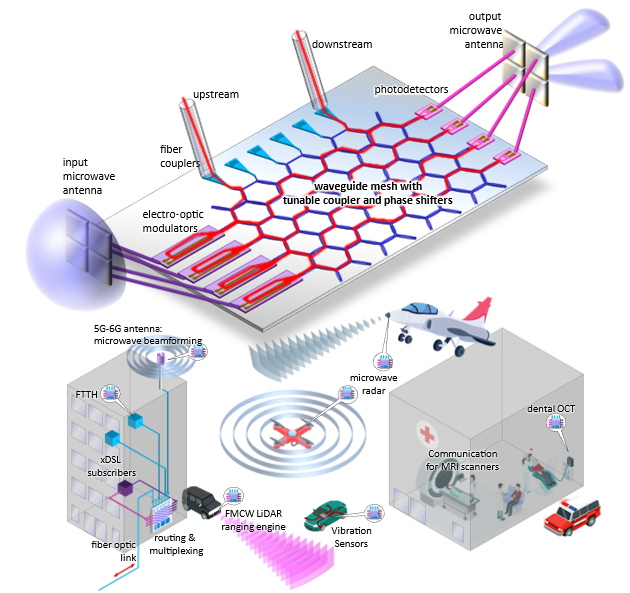|
|
|||||
| intern | ||||||
|
|
||||||
| ||||||||||
back to vacancy list Vacancy: Photonic Circuits for Wireless Microwave Applications (Open)Posted on 1/6/2025ContextPhotonic integrated circuits (PICs) are becoming increasingly powerful, especially for high-speed datacommunication. But the high bandwidth of optical signals also makes them very useful for transport of high-frequency microwave signals, by encoding those signals onto an optical carrier. This way, many high-frequency signals can be transported over a long distance using optical fiber, to the point where they need to be used (e.g. an antenna). This makes it possible to implement distributed microwave systems for wireless communication, radar, and sensors.
 Job DescriptionWe have opened a PhD position in the context of the GLIMWASP project. We are looking for a candidate with a background in photonics and/or electronics and/or RF engineering. As a PhD candidate, you will be performing research in collaboration between the two research teams of prof. Wim Bogaerts (PRG) and prof. Guy Torfs (IDlab), bringing together new photonic and electronic concept to realize new system demonstrations of microwave photonic functionalities. In the GLIMWASP project, we aim de demonstrate microwave beamforming, a low-power radar, a microwave photonics probe and a frequency synthesizer.
Candidate ProfileWe are looking for candidates who meet the following criteria:
About UsThe Photonics Research Group (about 130 people) is an associated lab of imec, and is part of the Department of Information Technology of Ghent University. The group is headed by Prof. D. Van Thourhout and has been active in photonics device research for many years. Prof. Wim Bogaerts, the promotor of this work, is one of the other 11 professors in this group. The main research directions are silicon(-nitride) nanophotonics, heterogeneous integration, optical communication, quantum optics, photonic (bio)sensors and photonic integrated circuits for biomedical applications in the near-infrared and mid-infrared wavelength range. More in particular, the programmable photonics work, which was started in 2016, aims to build highly functional photonic systems that can be controlled in software to serve a variety of applications, and power the next generation of photonic systems.
How to apply?Candidates should submit their CV and a motivation through the application forms using the link below. Apply hereMore information
Related research topics |